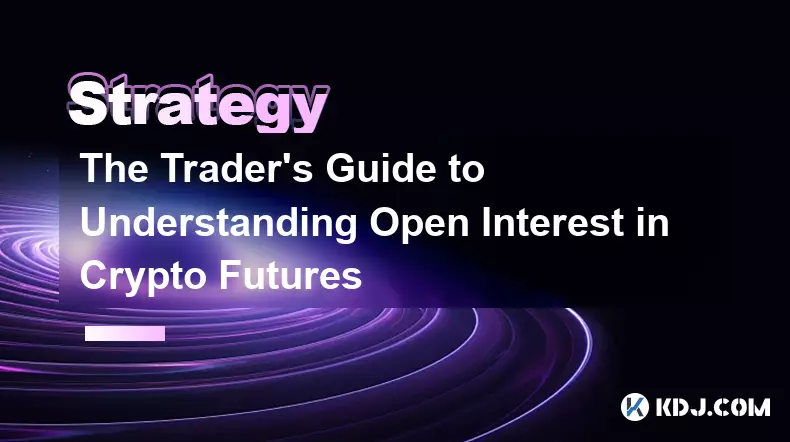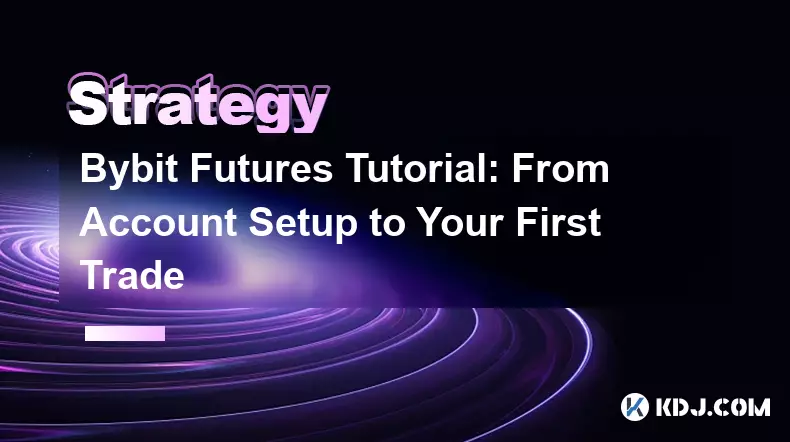-
 Bitcoin
Bitcoin $111100
0.49% -
 Ethereum
Ethereum $4304
0.21% -
 XRP
XRP $2.888
2.36% -
 Tether USDt
Tether USDt $0.9999
-0.03% -
 BNB
BNB $879.1
1.62% -
 Solana
Solana $207.9
2.67% -
 USDC
USDC $0.9998
-0.01% -
 Dogecoin
Dogecoin $0.2320
7.05% -
 TRON
TRON $0.3306
0.59% -
 Cardano
Cardano $0.8407
1.68% -
 Hyperliquid
Hyperliquid $48.50
3.55% -
 Chainlink
Chainlink $22.52
0.46% -
 Ethena USDe
Ethena USDe $1.001
-0.02% -
 Sui
Sui $3.395
0.74% -
 Bitcoin Cash
Bitcoin Cash $602.5
0.82% -
 Stellar
Stellar $0.3645
1.67% -
 Avalanche
Avalanche $24.82
0.93% -
 Hedera
Hedera $0.2211
0.99% -
 UNUS SED LEO
UNUS SED LEO $9.606
0.00% -
 Cronos
Cronos $0.2583
-2.44% -
 Litecoin
Litecoin $113.7
0.82% -
 Toncoin
Toncoin $3.094
0.39% -
 Shiba Inu
Shiba Inu $0.00001254
1.50% -
 Polkadot
Polkadot $4.040
4.96% -
 Uniswap
Uniswap $9.429
0.08% -
 Dai
Dai $0.9999
-0.01% -
 Ethena
Ethena $0.7629
3.04% -
 World Liberty Financial
World Liberty Financial $0.2111
-13.16% -
 Monero
Monero $269.9
0.50% -
 Aave
Aave $300.9
-0.41%
Scalping Strategies for Bitcoin Futures: A Pro's Guide
Bitcoin futures scalping demands precision, low-latency tools, and strict risk management to profit from rapid price movements in 24/7 markets.
Sep 08, 2025 at 01:36 am

Understanding Bitcoin Futures and Market Dynamics
1. Bitcoin futures allow traders to speculate on the future price of BTC without owning the underlying asset. These contracts are traded on regulated exchanges such as CME and Deribit, offering leverage and liquidity crucial for short-term strategies.
2. The price of Bitcoin futures often reflects market sentiment, funding rates, and macroeconomic signals. Traders who scalp must remain sensitive to order book depth, bid-ask spreads, and sudden shifts in volume.
3. Futures markets operate 24/7, enabling continuous execution of scalping strategies across different time zones. This constant activity increases opportunities but also raises the risk of slippage during low-liquidity periods.
4. Contango and backwardation in the futures curve influence roll yields and can impact profitability, especially when holding positions near expiration. Scalpers typically avoid extended holding but must still monitor curve behavior for anomalies.
5. Successful scalping hinges on precision timing and rapid execution, where even a few milliseconds can determine profit or loss due to tight margins.
Essential Tools for Scalping Bitcoin Futures
1. A high-performance trading platform with low-latency order routing is non-negotiable. Platforms like Bybit, Binance Futures, or BitMEX provide API access and advanced charting tools tailored for rapid-fire trading.
2. Real-time Level 2 order book data reveals hidden liquidity and potential price imbalances. Watching for sudden cluster fills or iceberg orders can signal short-term directional moves.
3. Custom scripts or bots automate entry and exit based on predefined conditions, reducing emotional interference. Traders often use Python with CCXT or proprietary algo frameworks to manage microsecond-level decisions.
4. Time and sales (T&S) data help identify aggressive buying or selling pressure. A spike in market orders at a specific price level may indicate institutional activity worth fading or following.
5. Risk management tools such as hard stop-losses, position sizing calculators, and circuit breakers are embedded into every professional scalping setup to prevent catastrophic drawdowns.
Core Scalping Techniques in Practice
1. Order flow imbalance scalping involves monitoring net buy/sell pressure in the order book. When aggressive market orders consume liquidity on one side disproportionately, a quick fade or momentum trade is initiated.
2. Spread arbitrage between perpetual and quarterly futures contracts is exploited when temporary mispricing occurs. This requires co-location or proximity to exchange servers to capture fleeting opportunities.
3. News-based micro scalping capitalizes on volatility after major announcements. Traders pre-load orders around expected price levels and trigger them milliseconds after data release, often using economic calendars integrated with trading bots.
4. Micro support and resistance levels derived from recent price action guide entry and exit points. These zones are more reliable on 1-minute and 3-minute charts where noise is minimized but reactivity remains high.
5. Top-tier scalpers avoid chasing breakouts; instead, they anticipate reversions to mean or fading overextended moves within a tight range defined by recent volatility.
Frequently Asked Questions
What is the ideal leverage for scalping Bitcoin futures?Leverage between 10x and 25x is commonly used by professionals. Higher leverage amplifies gains but also increases liquidation risk, especially during volatility spikes. Position size is adjusted downward as leverage increases to maintain risk control.
How much capital is needed to start scalping Bitcoin futures?While some begin with as little as $1,000, serious scalpers typically operate with at least $10,000 in capital. This allows for adequate position sizing, absorb transaction costs, and withstand minor drawdowns without over-leveraging.
Which time frames are most effective for Bitcoin futures scalping?The 1-minute and 5-minute charts are most frequently used. These intervals provide enough price movement for profit while minimizing exposure to longer-term noise. Some advanced traders use tick charts or volume-based bars for finer granularity.
Can scalping strategies be automated effectively?Yes, automation is standard among professional scalpers. Algorithms execute trades faster than humans, monitor multiple signals simultaneously, and maintain discipline. However, constant monitoring and strategy refinement are required to adapt to changing market regimes.
Disclaimer:info@kdj.com
The information provided is not trading advice. kdj.com does not assume any responsibility for any investments made based on the information provided in this article. Cryptocurrencies are highly volatile and it is highly recommended that you invest with caution after thorough research!
If you believe that the content used on this website infringes your copyright, please contact us immediately (info@kdj.com) and we will delete it promptly.
- Aster's Token Unveiling: Decentralized Exchanges Hit New Heights
- 2025-09-08 13:05:16
- HBAR Short Squeeze: A $35 Million Liquidation Opportunity?
- 2025-09-08 12:25:12
- BCH Price: Bitcoin Cash Technical Momentum Eyes $650 Target
- 2025-09-08 12:45:12
- Worldcoin's Bullish Run: Rallying Towards New Heights?
- 2025-09-08 12:25:12
- Altcoin Surge Incoming? Strategic Accumulation and the Fed Rate Cut
- 2025-09-08 12:45:12
- Bitcoin, Dogecoin, Solana: Navigating Crypto's Crossroads
- 2025-09-08 14:25:14
Related knowledge

The Trader's Guide to Understanding Open Interest in Crypto Futures
Sep 07,2025 at 08:19am
The Significance of Open Interest in Crypto Futures Trading1. Open interest represents the total number of active derivative contracts that have not b...

Hedging with Crypto Futures: A Guide to Protecting Your Portfolio
Sep 07,2025 at 07:18am
Hedging with Crypto Futures: A Guide to Protecting Your Portfolio Cryptocurrency markets are known for their extreme volatility. Sudden price swings c...

Swing Trading Ethereum Futures: Setups and Strategies
Sep 06,2025 at 09:18pm
Understanding Ethereum Futures in Swing Trading1. Ethereum futures allow traders to speculate on the future price of ETH without owning the underlying...

Scalping Strategies for Bitcoin Futures: A Pro's Guide
Sep 08,2025 at 01:36am
Understanding Bitcoin Futures and Market Dynamics1. Bitcoin futures allow traders to speculate on the future price of BTC without owning the underlyin...

Bybit Futures Tutorial: From Account Setup to Your First Trade
Sep 08,2025 at 02:54am
Creating Your Bybit Account and Initial Setup1. Visit the official Bybit website and click on the 'Sign Up' button located at the top right corner. Pr...

Mastering Crypto Derivatives: The Ultimate Playbook for Traders
Sep 05,2025 at 09:55am
Understanding the Foundation of Crypto Derivatives1. Crypto derivatives are financial instruments that derive their value from an underlying cryptocur...

The Trader's Guide to Understanding Open Interest in Crypto Futures
Sep 07,2025 at 08:19am
The Significance of Open Interest in Crypto Futures Trading1. Open interest represents the total number of active derivative contracts that have not b...

Hedging with Crypto Futures: A Guide to Protecting Your Portfolio
Sep 07,2025 at 07:18am
Hedging with Crypto Futures: A Guide to Protecting Your Portfolio Cryptocurrency markets are known for their extreme volatility. Sudden price swings c...

Swing Trading Ethereum Futures: Setups and Strategies
Sep 06,2025 at 09:18pm
Understanding Ethereum Futures in Swing Trading1. Ethereum futures allow traders to speculate on the future price of ETH without owning the underlying...

Scalping Strategies for Bitcoin Futures: A Pro's Guide
Sep 08,2025 at 01:36am
Understanding Bitcoin Futures and Market Dynamics1. Bitcoin futures allow traders to speculate on the future price of BTC without owning the underlyin...

Bybit Futures Tutorial: From Account Setup to Your First Trade
Sep 08,2025 at 02:54am
Creating Your Bybit Account and Initial Setup1. Visit the official Bybit website and click on the 'Sign Up' button located at the top right corner. Pr...

Mastering Crypto Derivatives: The Ultimate Playbook for Traders
Sep 05,2025 at 09:55am
Understanding the Foundation of Crypto Derivatives1. Crypto derivatives are financial instruments that derive their value from an underlying cryptocur...
See all articles

























































































